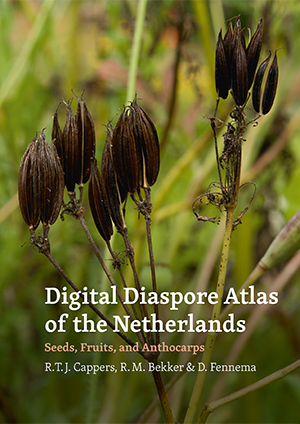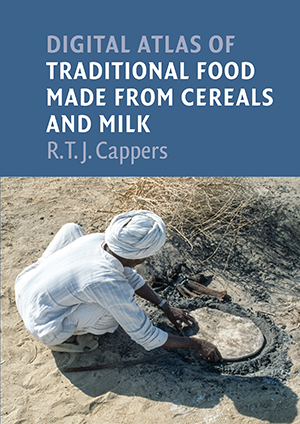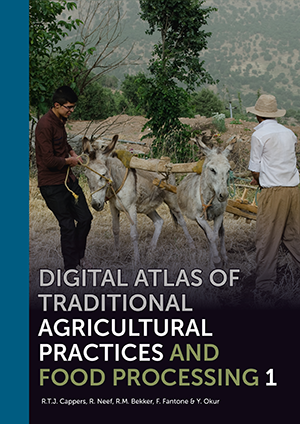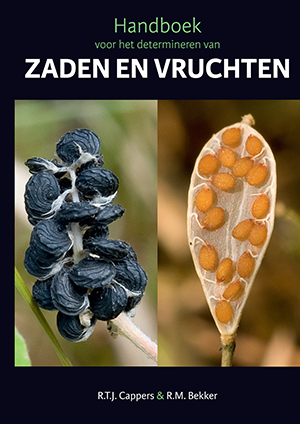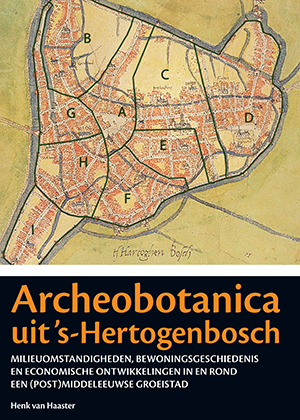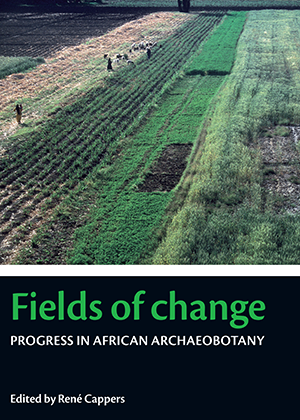This handbook is a completely revised version of the first edition with ISBN 9789491431074, which was published in 2012.
Plant palaeoecologists use data from plant fossils and plant subfossils to reconstruct ecosystems and food economies of the past. This book deals with the study of subfossil plant material retrieved from archaeological excavations and cores dated to the Late Glacial and the Holocene.
One of the main objectives of this book is to describe the processes that underlie the formation of the archaeobotanical archive and the ultimate composition of the archaeobotanical record – being the data that are sampled and identified from this immense archive. Our understanding of these processes benefits from a knowledge of plant ecology and traditional agricultural practices and food processing. This handbook summarizes the basic ecological principles that relate to the reconstruction of former vegetation and of the agricultural practices in particular.
This handbook is a completely revised version of the first edition, which was published in 2012. An important adaptation relates to new developments in the research on diaspores (seeds and fruits). This mainly concerns morphology, taxonomy, and ecology. We reduced the treatment of research on pollen somewhat, and we now present it in an equivalent manner to the other research disciplines. We have extended the cereals with millets, a variable group of grains that play an important role in the agricultural development of both Eurasia and northern Africa. The taxonomy is largely in line with new insights based on combined morphological and genetic research, as published by the Angiosperm Phylogeny Group.
The findings of our ethno-archaeobotanical fieldwork have been extensively documented in the Digital atlas of traditional agricultural practices and food processing (Cappers et al., 2016) and the Digital atlas of traditional food made from cereals and milk (Cappers 2018). We have incorporated part of this information in a condensed format in this version of the handbook, including the typologies of fuel, harvesting implements, ovens, and traditional food. The website of the Digital Plant Atlas project (www.plantatlas.eu) offers the opportunity to examine photographs of plant parts and of processes related to agricultural practices and food processing in more detail, using extensive search tools.
Preface 9
1 General introduction 13
1.1 Levels of organization and levels of research 13
1.2 Atoms, molecules, and macromolecules 17
1.2.1 Isotopes 17
1.2.2 DNA 18
1.2.3 Residues 20
1.3 Plant micro-remains 21
1.3.1 Spores and pollen 21
1.3.2 Phytoliths 28
1.3.3 Tissues 30
1.4 Plant macro-remains 31
1.4.1 Wood 31
1.4.2 Seeds and fruits 32
2 Seeds and fruits 37
2.1 Propagation, dispersal, and consumption 37
2.2 Seed morphology 40
2.3 Fruit morphology 43
2.4 Diaspores 48
2.4.1 Seed 49
2.4.2 Fruit 50
2.4.3 Multiple fruit 52
2.4.4 Fruitlet 52
2.4.5 Compound fruit 55
2.4.6 Whole plant 56
2.5 Subfossil remains 56
3 Taxonomy and ecology 59
3.1 Plant taxonomy 59
3.1.1 Taxonomy and genetics 59
3.1.2 Taxonomic ranks 64
3.1.3 Abbreviations 65
3.1.4 Accepted names and synonyms 66
3.1.5 Plant names in written sources 67
3.1.6 Vernacular names of common crops 71
3.2 Plant ecology 73
3.2.1 Seed production and seed predation 73
3.2.2 Seed dispersal 75
3.2.3 Environmental conditions 81
3.2.4 Water 82
3.2.5 Minerals 91
3.3 Flora and vegetation 93
3.3.1 Landscape, flora, and vegetation 93
3.3.2 Flora 94
3.3.3 Vegetation 96
3.3.4 Palaeoecological model 122
3.4 Community ecology 127
3.4.1 Humans, plants, and animals 127
3.4.2 Microorganisms 129
4 Economic plants 133
4.1 Cereals 133
4.1.1 Morphology and classification 133
4.1.2 Glossary of grass terminology 137
4.1.3 Key to grass genera 139
4.1.4 Hordeum 140
4.1.5 Aegilops 149
4.1.6 Triticum 154
4.1.7 Secale 180
4.1.8 Avena 185
4.1.9 Oryza 195
4.1.10 Millets 198
4.1.11 Key to subfossil remains 208
4.2 Pulses 216
4.2.1 Morphology and classification 216
4.2.2 Cicer 216
4.2.3 Lens 217
4.2.4 Pisum 219
4.2.5 Vicia 220
4.2.6 Lathyrus 221
4.3 Oil and fibre crops 228
4.3.1 Linum 228
4.3.2 Sesamum 228
4.3.3 Camelina 229
4.3.4 Cannabis 230
5 Traditional agricultural practices 237
5.1 Pre-harvesting 237
5.1.1 Tillage 237
5.1.2 Water management 241
5.1.3 Manuring 247
5.1.4 Sowing and planting 252
5.1.5 Weed control and crop protection 254
5.2 Harvesting 260
6 Traditional food processing 273
6.1 Basic principles 273
6.1.1 Classification 273
6.1.2 Fragmentation and separation 274
6.1.3 Mixing and shaping 301
6.1.4 Heating and cooling 301
6.1.5 Germination 304
6.1.6 Fermentation 304
6.1.7 Improving edibility and digestibility 304
6.1.8 Improving shelf-life 307
6.1.9 Storage 311
6.2 Traditional foods 314
6.2.1 Classification 314
6.2.2 Cereal-based foods 317
6.2.3 Milk products 324
6.2.4 Cereal–milk-based foods 326
7 The former food economy 329
7.1 Crops 329
7.1.1 The origins of farming 329
7.1.2 Crop domestication 335
7.1.3 Crop selection 340
7.1.4 Crop ratios 347
7.1.5 Use of by-products 356
7.1.6 Case studies 361
7.2 Fuel 370
7.2.1 Fuel sources 371
7.2.2 Heating installations 380
8 The archaeobotanical archive 383
8.1 Formation processes 383
8.1.1 Origin of plant material 383
8.1.2 Dispersal and deposition 384
8.1.3 Mixing and contamination 387
8.1.4 Preservation and reduction 396
8.2 Sampling 403
8.2.1 Research questions 403
8.2.2 Archaeological contexts 404
8.2.3 Sampling strategies 414
8.2.4 Off-site reconstruction 418
8.2.5 Concentrating the plant material 434
8.3 Documentation 441
8.3.1 Plant description 441
References 449
Glossary 467
Index of organisms 475
Index of subjects 487
